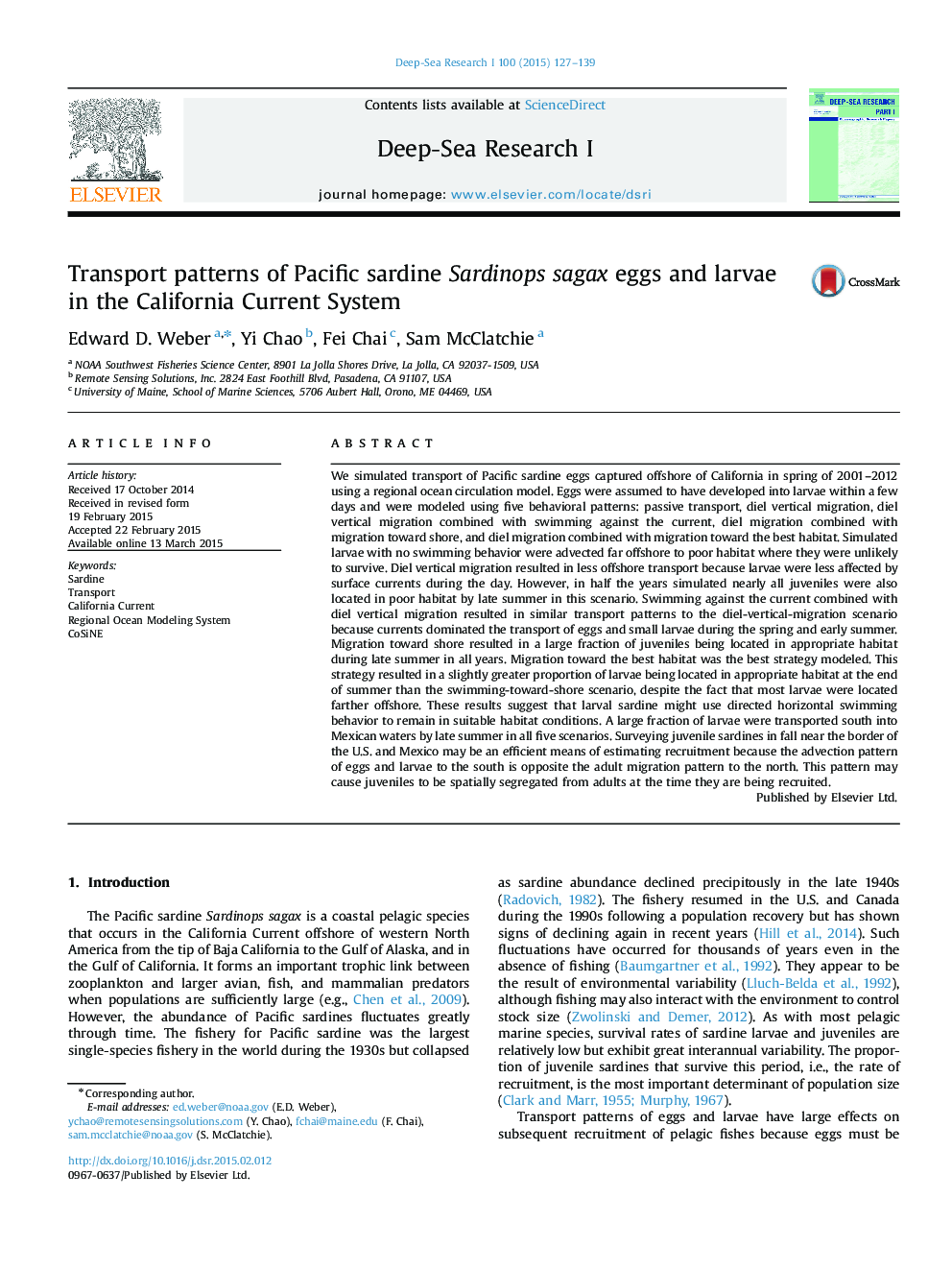| کد مقاله | کد نشریه | سال انتشار | مقاله انگلیسی | نسخه تمام متن |
|---|---|---|---|---|
| 6383462 | 1626330 | 2015 | 13 صفحه PDF | دانلود رایگان |
عنوان انگلیسی مقاله ISI
Transport patterns of Pacific sardine Sardinops sagax eggs and larvae in the California Current System
ترجمه فارسی عنوان
الگوهای حمل و نقل از تخم مرغ ساردینوپ ساردینو اریکسون و لارو در سیستم فعلی کالیفرنیا
دانلود مقاله + سفارش ترجمه
دانلود مقاله ISI انگلیسی
رایگان برای ایرانیان
کلمات کلیدی
موضوعات مرتبط
مهندسی و علوم پایه
علوم زمین و سیارات
زمین شناسی
چکیده انگلیسی
We simulated transport of Pacific sardine eggs captured offshore of California in spring of 2001-2012 using a regional ocean circulation model. Eggs were assumed to have developed into larvae within a few days and were modeled using five behavioral patterns: passive transport, diel vertical migration, diel vertical migration combined with swimming against the current, diel migration combined with migration toward shore, and diel migration combined with migration toward the best habitat. Simulated larvae with no swimming behavior were advected far offshore to poor habitat where they were unlikely to survive. Diel vertical migration resulted in less offshore transport because larvae were less affected by surface currents during the day. However, in half the years simulated nearly all juveniles were also located in poor habitat by late summer in this scenario. Swimming against the current combined with diel vertical migration resulted in similar transport patterns to the diel-vertical-migration scenario because currents dominated the transport of eggs and small larvae during the spring and early summer. Migration toward shore resulted in a large fraction of juveniles being located in appropriate habitat during late summer in all years. Migration toward the best habitat was the best strategy modeled. This strategy resulted in a slightly greater proportion of larvae being located in appropriate habitat at the end of summer than the swimming-toward-shore scenario, despite the fact that most larvae were located farther offshore. These results suggest that larval sardine might use directed horizontal swimming behavior to remain in suitable habitat conditions. A large fraction of larvae were transported south into Mexican waters by late summer in all five scenarios. Surveying juvenile sardines in fall near the border of the U.S. and Mexico may be an efficient means of estimating recruitment because the advection pattern of eggs and larvae to the south is opposite the adult migration pattern to the north. This pattern may cause juveniles to be spatially segregated from adults at the time they are being recruited.
ناشر
Database: Elsevier - ScienceDirect (ساینس دایرکت)
Journal: Deep Sea Research Part I: Oceanographic Research Papers - Volume 100, June 2015, Pages 127-139
Journal: Deep Sea Research Part I: Oceanographic Research Papers - Volume 100, June 2015, Pages 127-139
نویسندگان
Edward D. Weber, Yi Chao, Fei Chai, Sam McClatchie,
